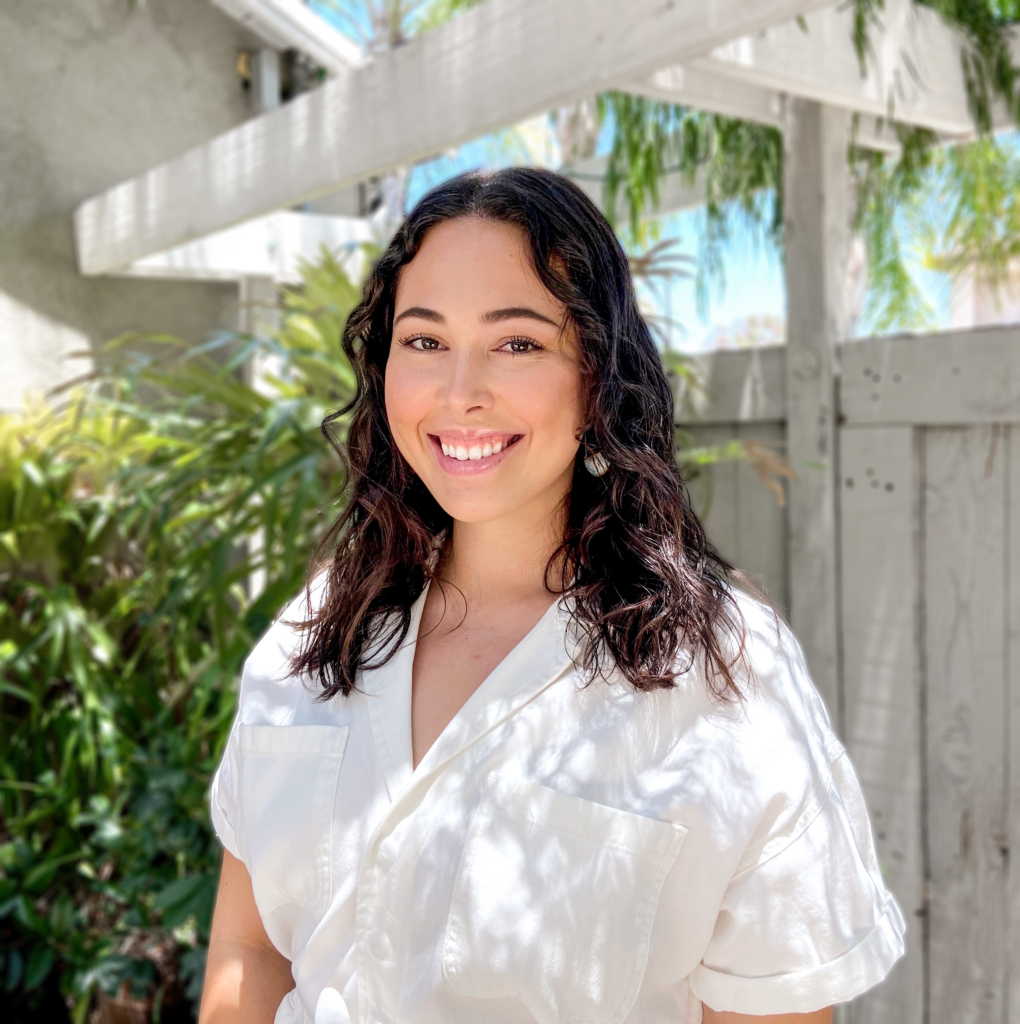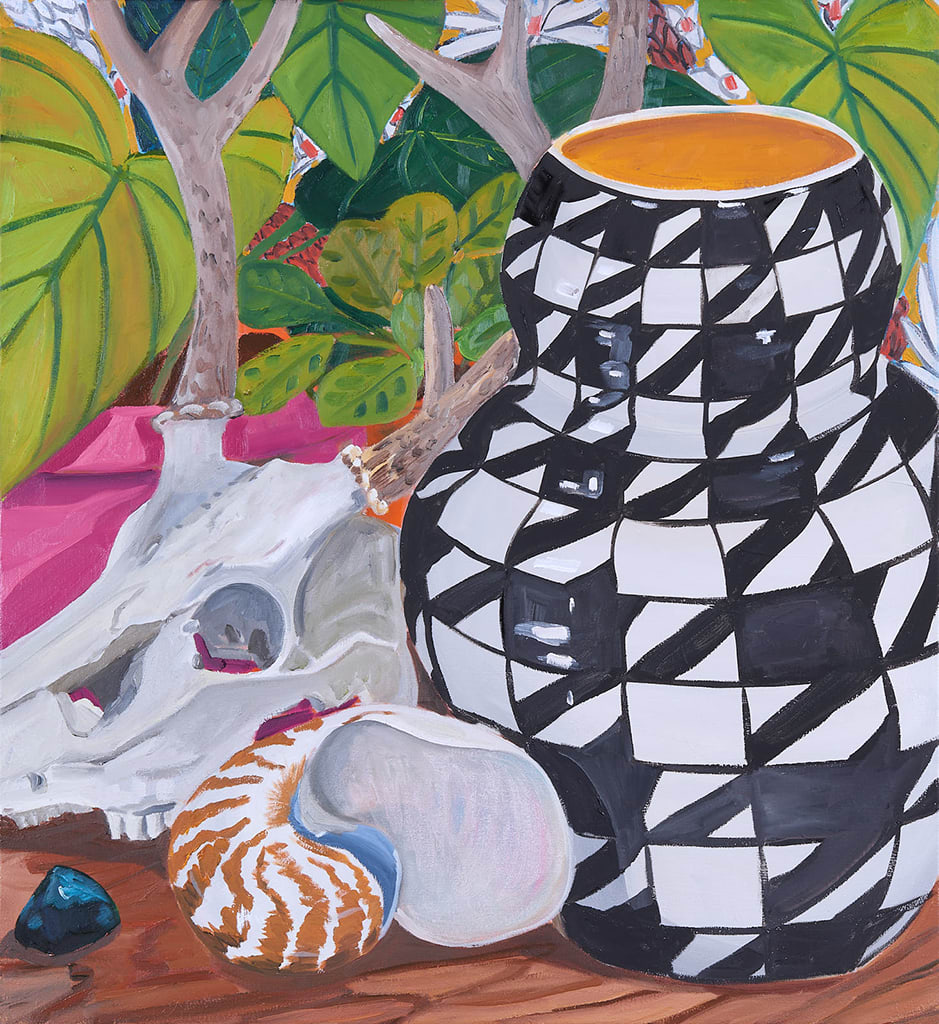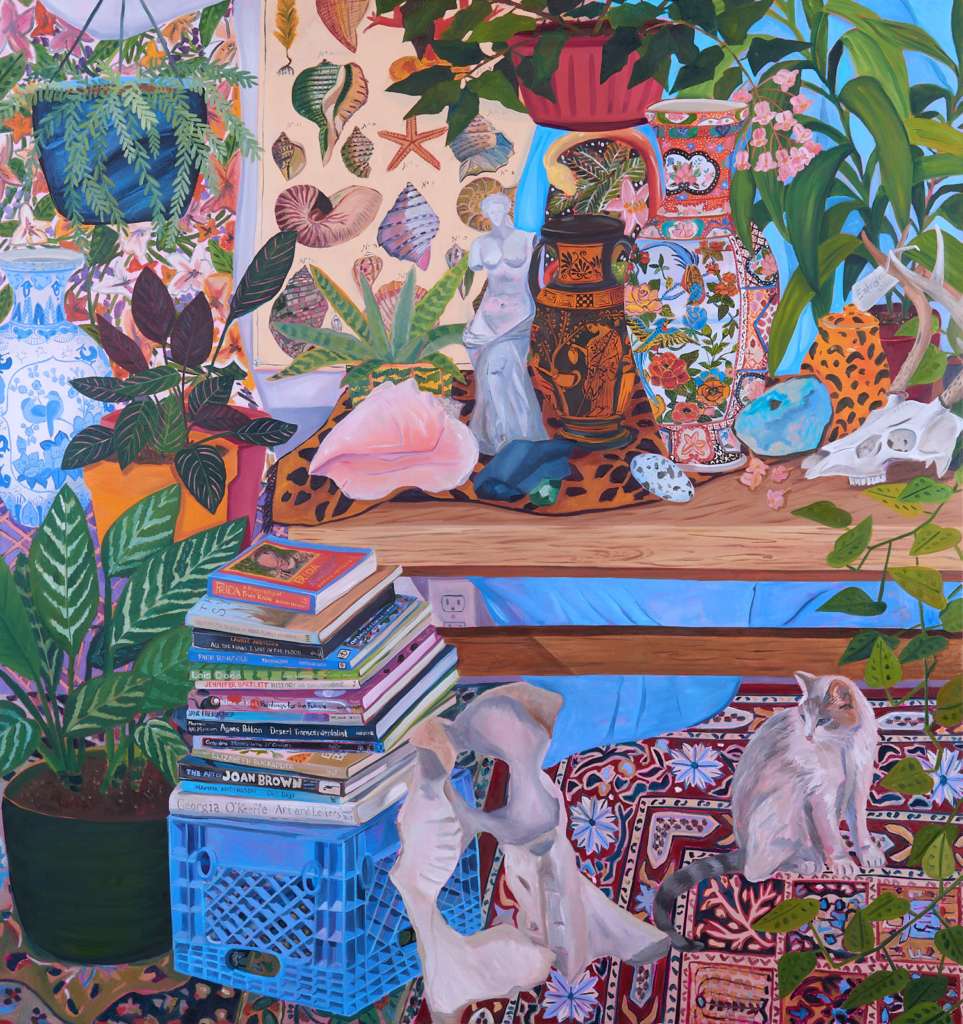
The Colorful World of Miss Anna Valdez
Anna Valdez, Objects of Affection, 2020. Oil on canvas, 85 x 80 inches.

Hi! My name is Alyson, and I’m this year’s Getty Marrow Intern at AMOCA. I recently graduated from Chapman University with a BA in Art History and a minor in Anthropology.
An artist that I’ve become super interested in and made a point to follow in the past year is Anna Valdez, a 35 year old painter, designer and ceramic artist working in Oakland, CA. Her paintings, some of which fill an entire wall, truly speak to the maximalist in me. Valdez is not afraid to place a plaid blanket next to a patterned cookbook and the stripes of a snake plant, or to nestle a floral covered vase amidst a canvas of house plants and flowers.
Aside from her paintings, Valdez has also been creating ceramic works, which oftentimes are idealized first in a painting and then recreated in clay, or vice versa. Two vases, Polkadots with Leaves (2019) and Striped Snake (2019), both play into the idea of material culture, which is the collective material made and used by people in a cultural group. In these two vases, there is a handmade quality that solidifies the ceramics as having come from Valdez, and aid in the formation of her individual culture as a product of our globalized world. Due to factors such as globalism and the internet, cultural groups today can be defined by old or new traditions, or even common interests. The blending of cultures sits in Valdez’s paintings in the form of patterns and collectables: tropical plants, animal prints, rugs and table cloths, book spines and statuettes.
This pattern of recreating objects in multiple mediums, and positioning them within larger narratives of collected objects is really fascinating to me, as someone who has studied both Art History and Anthropology. It isn’t surprising at all that Valdez began her relationship with art while on an archaeological dig, where she kept a sketchbook with drawings of the objects she came in contact with. Her decision to work with clay is also fascinating, as ceramics are a universal object among cultures because of their functionality, and are the most common item found at archaeological sites (though typically in fragments). This experience is directly reflected in her paintings, where her life, studio and collected objects are depicted repeatedly in various 16th century Dutch still-life inspired arrangements. It is also interesting to note that Dutch still-lifes were commissioned in order to memorialize the wealth families had, whether it be dinnerware, worldly objects, or fresh fruit.
The paintings are otherworldly and comforting at the same time, beckoning to the colors and perspective used in late 19th century Post-Impressionism (think Henri Matisse), and Primitivism (think Paul Gauguin and Henri Rousseau). While Primitivism as an art movement is now regarded as fetishistic and demeaning to the non-white cultures who were the “primitive” subjects, Valdez is able to reverse the fetishistic quality of the style by pulling inspiration from objects that surround her in her daily life. The perspective positions the viewer so that they are invited into the painting to look around in Valdez’s world, playing eye-spy with her collection of prized possessions.
Valdez recently had her third solo exhibition, Objects of Affection, at Hashimoto Contemporary in San Francisco. Follow her on Instagram @missnanavaldez for more updates on current work.

Anna Valdez, Striped Snake, 2019. Ceramic, underglaze and glaze, 10 x 7.5 in. 
Anna Valdez, Polkadots with Leaves, 2019. Porcelain, underglaze and glaze, 8 x 6 in. 
Anna Valdez, Mint Pattern with Red, 2019. Porcelain, underglaze, glaze, 7.5 x 7.5 in. 
Anna Valdez, Leopard Prints, 2019. Oil and acrylic on canvas, 42 x 40 in. 
Anna Valdez, Houndstooth Vessel with Deer Skull, 2020. Oil on canvas, 26 x 24 in.
Alyson Brandes is a graduate of Chapman University and a 2020 Getty Marrow Undergraduate Intern at AMOCA. During her internship, Brandes writes periodically for AMOCA.org, and posts on Instagram and Facebook on Tuesdays. Read her blog posts:
- Asco and the Hierarchies of Art
- Feminizing Brutalism: Ruby Neri and Her Giant Vessels
- The Cinematic Roots of Clay
- The Colorful World of Miss Anna Valdez
- Split Vessels: Jenny Hata Blumenfield
- The Legend of Beatrice Wood
- Nicole Seisler: Rituals, Processes and Documentation
- Ashwini Bhat
- Nancy Selvin: The Abstraction of Art History
- New Acquisitions: Trompe l’Oeil
- Kim Tucker’s “Primal Beings, Ghosts, and Human Dummies”
- Blue Boys and Farmers: Howard Kottler’s Queer Plates
- At the Center of Nicki Green
- The Legacy of Sascha Brastoff
- End of Internship Reflection
